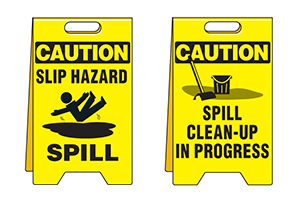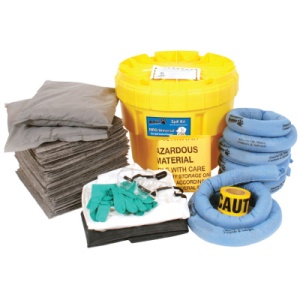
You never know when a spill will occur, but you can be sure of how you’re going to handle it. Having the right spill sorbents on-hand can make all the difference when it comes to cleaning up a spill quickly and efficiently. Sorbents are the most common – and arguably the most important – parts of spill control kits because they can help contain and clean various types of spills.
That said, there are different types of sorbents to choose from when picking out spill kits for your workplace. In order to select the right spill sorbent for your application, it’s important to consider the environment in which you’ll be using it and how large spills (or even drips) are likely to be. Here are a few sorbents to consider utilizing in your spill kits:
- Pads
Widely considered to be industrial sorbent towels of sorts, pads are used for almost all types of spills, drips and leaks because they’re so easy to use. Plus, they absorb various liquids and won’t break the bank! - Rolls
Though they are similar to pads, rolls provide even more coverage when you’re cleaning up spills. - Booms
Booms are typically used to absorb, contain and skim oil and hydrocarbons from water, but they can also be used if there is a large amount of liquid you need to absorb. - Socks
In an effort to contain and absorb spills, drips and leaks, socks are commonly wrapped around leaky pieces of machinery. - Pillows
Perfect for when greater quantities of liquid need to be absorbed, pillows are usually found under repetitive drips, in a sump or on a large-volume spill site. - Granular
Ideal for first response emergency scenarios, these multi-purpose absorbents can be utilized for spill cleanups, lab packings and stabilizations of free liquids.
From sorbents to spill kits, Emedco has all the products you need to keep workers safe in your facilities. Just give our team of professionals a call at (866) 748-5963 or visit Emedco.com to find safety solutions for every challenge.









